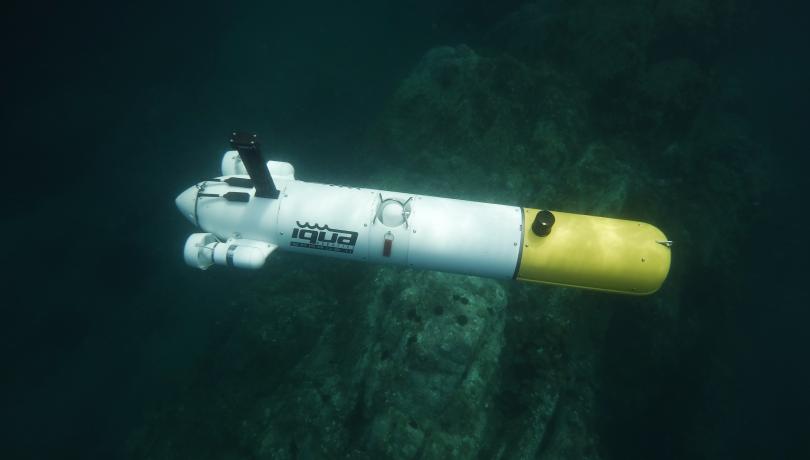The initiative, in which the ICM-CSIC participates, will develop an underwater platform to intelligently monitor marine ecosystems in real time and thus contribute to improving their management.

A scientific team led by the University of Girona (UdG) will develop an underwater platform to intelligently monitor marine ecosystems in real time. The project is called "Plataforma de Larga Duración para la Observación de los Ecosistemas Marinos" (PLOME) and is being carried out jointly with the Universitat Politècnica de Catalunya - BarcelonaTech (UPC), the Universitat de les Illes Balears (UIB), the Universidad Politécnica de Madrid (UPM), the Institut de Ciències de Mar (ICM-CSIC) and the company Iqua Robotics SL.
The project has a budget of 1.5 million euros from funds from the State Research Agency and European funds NextGenerationEU. Over three years, PLOME will design a non-invasive and modular platform to collect essential data for the scientific community to better supervise, monitor and manage marine ecosystems.
Specifically, the project proposes to develop a set of independent systems consisting of fixed stations that remain on the seabed, underwater vehicles and surface vehicles that work together autonomously to collect data. Together they form a platform that can monitor an area for several weeks, and up to a month, without the need for human intervention.
The aim of the project is to advance the current methodology in which, for the most part, data is only extracted while a human team is conducting an oceanographic campaign. The PLOME platform allows monitoring over a long period of time, with real-time communications facilitating ecosystem monitoring.
During the three years of the project, three experiments will be carried out. The first will consist of a validation of the monitoring systems between 300 and 500 metres deep in a protected fishing area near the city of Barcelona. The second, off the coast of Vilanova i la Geltrú (Barcelona), will validate all systems at shallow depths. The platform will be connected to the OBSEA marine observatory, and this will allow real-time monitoring of all the systems to check that they are working correctly.
"With PLOME we want to consolidate the use of autonomous underwater vehicles as a tool for observing the seabed that does not require a whole human team and a dedicated infrastructure at the time it is used," explains Marc Carreras, a researcher in the Computer Vision and Robotics research group (VICOROB) at the UdG and coordinator of the project. As he explains, "autonomous vehicles make it possible to do the work for one or several days, analysing and making decisions so that the data is good".
"It is one of the technologies needed to properly manage marine ecosystems, since this autonomy allows the operation of the vehicles to be scalable," adds the VICOROB researcher. In addition to leading the project, VICOROB will be in charge of adapting the autonomous underwater vehicles for experimental validation.
For its part, the ICM-CSIC is the partner responsible for calculating ecological indicators as a synthetic metric of the health and recovery of marine ecosystems.
"From the information obtained by automatically processing the images from the robotic platforms, we will proceed to calculate the abundance of species and global biodiversity," says the ICM-CSIC researcher Jacopo Aguzzi.
The Centre for the Development of Remote Acquisition and Information Processing Systems of the UPC will contribute with the design of the fixed stations for the observation of the seabed, while the most relevant contribution of the UIB in this project is the generation and implementation of artificial intelligence algorithms for the analysis of images obtained by the cameras on board the platforms, both for the autonomous vehicles and the fixed stations.
The UPM will focus on the management of underwater acoustic communications and satellite and/or GSM communications and, finally, the Girona-based company IQUA Robotics will develop mapping algorithms based on data acquired with lasers, video cameras and acoustic cameras.